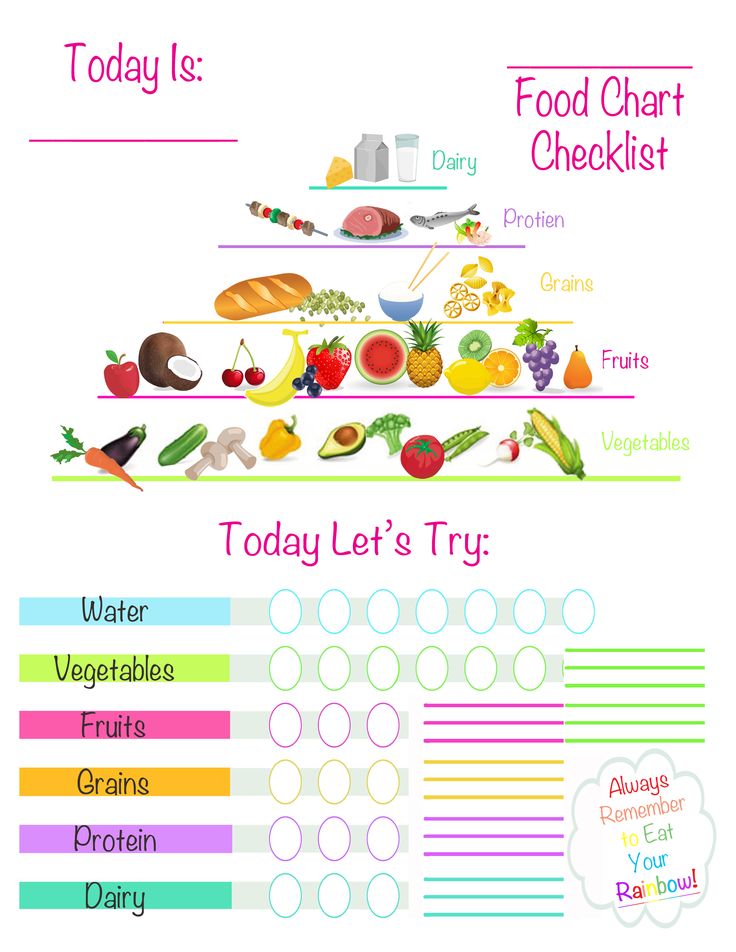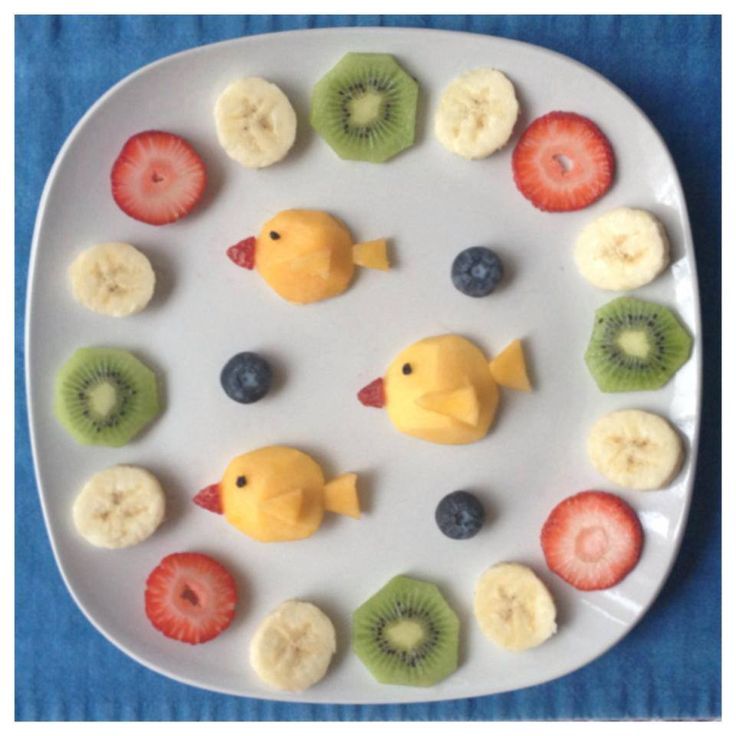Baby food tracking chart
Printable Checklist For Baby’s First Foods + Tips For Introducing Solids
1.9K shares
- Facebook73
Wondering what are the best first foods to feed your baby? We’ve created a free printable checklist with foods and flavors to try + helpful tips for starting solids.
Many parents starting their babies on solid food will wonder, “what is the absolute best first food I can feed my baby?”, looking for a concrete answer like “peas” or “carrots”. However, the exact first food is fairly insignificant – instead, it’s the variety of healthy foods you serve your baby in their first few months of eating solids that’s most important.
Studies have shown that trying a wide assortment of flavors with your infant can keep picky eating at bay, and will ultimately make them more willing to try (and accept!) other new foods in the future. Plus, these are the foods that are helping fuel your baby’s development and growth, so the more they can enjoy a variety of nutrient-rich foods, the better.
With this in mind, we’ve team up with our sponsor, Stonyfield Farm, to create a free printable chart that is loaded with ideas of nutritious foods and flavors to try with your baby – allowing you to track your attempts and their reaction.
So whether your baby is just starting on purées, moving onto solids, or doing Baby-Led Feeding, you’ll be able to make sure they’re getting a wide variety of healthy foods, and expanding their palette in the process.
Read on to learn how to download the printable and get our helpful tips for starting solids.
PIN for when you’re ready to start solids!
PRINTABLE TRACKING CHART
So here it is! Our free Printable Tracking Chart for Baby’s First Foods.
You’ll see that it’s full of suggestions for nutritious foods to serve your child – from fruits and veggies, to grains, dairy and proteins. There’s even suggestions for different spices and flavors to incorporate to further expand their horizons.
And if there’s a certain food or dish you’d like them to try that’s not listed, simply add it in the “Other Foods” section that we’ve left blank.
Each food has 5 “check boxes” next to it, so as your serve it to your baby, you can check off one of the boxes. You can even make the circle into an emoji based on your child’s reaction. As it can take 5-10 tries for a baby to decide whether or not they like a certain food, this will help you track your attempts and serve as a reminder to be patient and keep trying!
To download our printable Baby’s First Foods Tracking Chart simply enter your email into the box below and we’ll immediately send you the PDF right to your inbox:
Whatever foods you decide to try first, keep these tips in mind:
The Waiting Game: Many pediatricians recommend waiting 3-5 days between trying each new food so if your baby develops any reaction, it will be easier to pinpoint the culprit. Others will waive this waiting period except with higher-risk foods like peanut butter or eggs. Discuss with your child’s Doctor the length of time their practice recommends waiting.
Discuss with your child’s Doctor the length of time their practice recommends waiting.
No Raw Honey: Avoid feeding you infant raw honey until they are at least a year old, as there is a risk of infant botulism, a deadly disease.
Avoid Cow’s Milk Until 1 Year: Babies can’t digest straight-up cow’s milk as well as they can breast milk or formula, and the high concentration of protein and minerals can cause stress to their developing kidneys. Doctors only recommend starting cow’s milk once your baby is a year old.
Yogurt is A-Okay! Because cow’s milk is off-limits for the first year, many parents think this means yogurt is a no-no. But that’s actually not the case! Pediatricians give yogurt the thumbs up for babies beginning at six months. Yogurt has live, active cultures that break down the lactose and protein, so it’s much easier for babies to digest. Some, like our recommended Stonyfield YoBaby yogurt, include added Vitamin D and the probiotic BB-12 which supports a healthy gut microbiome and aid in digestion.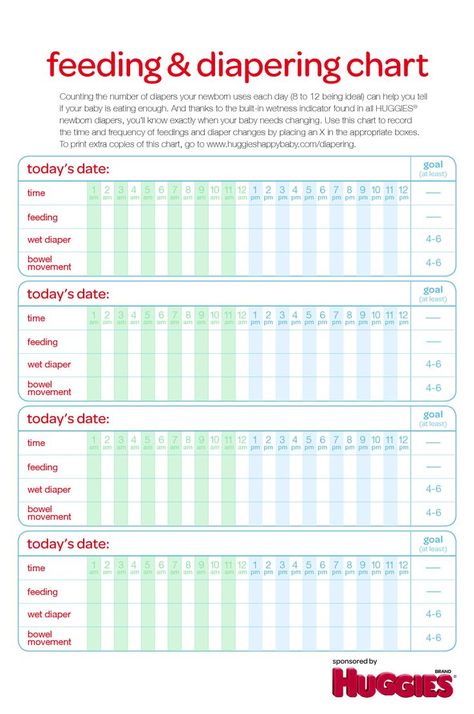 It’s also made with whole milk which is important as fat is critical for brain development. And like all of Stonyfield’s yogurts, YoBaby is organic which means it includes no harmful persistent pesticides, antibiotics, artificial growth hormones, or GMOs.
It’s also made with whole milk which is important as fat is critical for brain development. And like all of Stonyfield’s yogurts, YoBaby is organic which means it includes no harmful persistent pesticides, antibiotics, artificial growth hormones, or GMOs.
Don’t Undercook: Make sure everything you feed your baby is well cooked, especially meats, eggs and shellfish, as their bodies are more sensitive to bacteria and can therefore be at a higher risk of getting food poisoning.
Fish: Avoid fish with high levels of mercury like Swordfish and Marlin.
Keep Food Unsalted: Don’t add salt to any homemade food, and keep your eye on sodium levels of anything store-bought. The guidelines for a child under 1 is to have less than 1g of salt (0.4g sodium) a day.
Avoid Artificial Sweeteners: Babies don’t need artificial sugars, especially when you can use natural sweeteners like mashed or puréed fruits and veggies to sweeten more “bland” foods.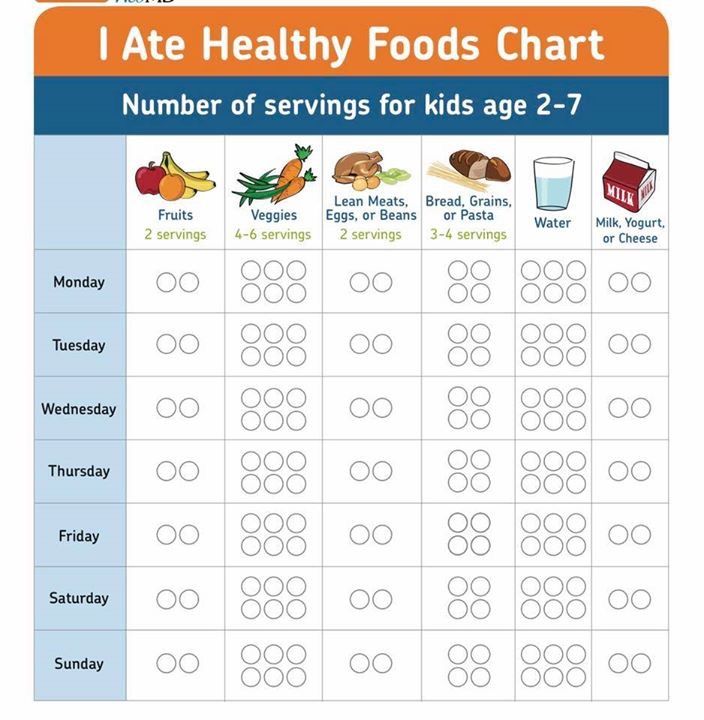 But babies really don’t know any different – try them with one of Stonyfield’s YoBaby yogurts with no added sugar, like their Plain, Banana Mango or Veggie flavors, and you’ll see that they will quickly gobble it up!
But babies really don’t know any different – try them with one of Stonyfield’s YoBaby yogurts with no added sugar, like their Plain, Banana Mango or Veggie flavors, and you’ll see that they will quickly gobble it up!
Make Your Meat Tender: Make proteins like beef, chicken or pork easy to chew by tenderizing them in a slow cooker or InstaPot.
Steam or Roast Veggies: Soften your vegetables by steaming or roasting them. Purée if you are spoon feeding or keep them in long sticks for Baby-Led Feeding.
Cook With Broth: Cook any grains or vegetables in an unsalted bone broth instead of water. It not only adds additional nutrients, but exposes them to other flavors.
Allergens: It is no longer recommended to delay the introduction to potential allergens like peanut butter and eggs. In fact, studies have shown that the early introduction of allergenic foods around 6 months of age could potentially decrease their risk of developing a food allergy.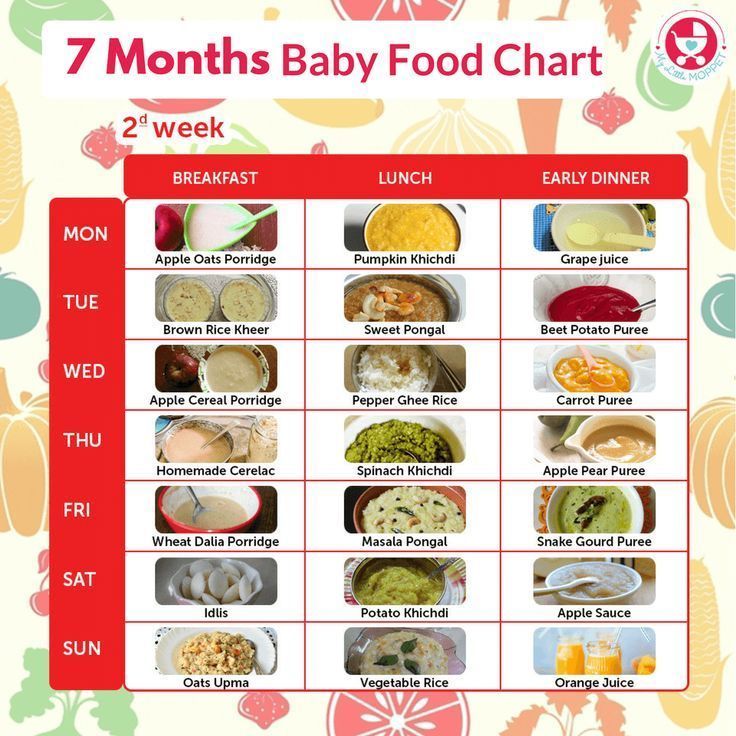 Discuss your strategy with your child’s pediatrician, especially if you have a family history of food allergies.
Discuss your strategy with your child’s pediatrician, especially if you have a family history of food allergies.
Spice Things Up: Don’t be afraid to try different spices and seasonings with your baby. Sprinkle some cinnamon on apples, a squeeze of lemon on chicken or rosemary on potatoes. The more combinations they are exposed to, the more they will accept new foods in the future.
RELATED: 18 Tips to Raise an Adventurous, Non-Picky Eater From Baby to Toddler & Beyond
Try Different Cooking Methods: A food’s taste can be completely transformed depending on how you cook it – the difference between a boiled Brussel Sprout and a roasted one is like night and day. So mix it up! Once your baby has tried a food one way, use a different method the next time. Grill, roast, boil, steam, slow cook, sauté – expand your cooking repertoire and their palette at the same time!
First Aid: Always be present while your baby is eating. Know the difference between choking and gagging, and what to do in either case.
Know the difference between choking and gagging, and what to do in either case.
To download our printable Baby’s First Foods Tracking Chart simply enter your email into the box below and we’ll immediately send you the PDF right to your inbox:
Whatever you decide to try first, make sure it is a healthy, nutrient-rich choice. Bon appetit!
Thanks again to our sponsor, Stonyfield Farm, for making the #1 Pediatrician recommend yogurt – a perfect first food for 6+ months.
Looking for a great starter recipe for your baby’s breakfast that you and your family can also enjoy? Try our healthy Blueberry Oatmeal Pancakes – they have no added sugars, and are fluffy and delicious!
1.9K shares
- Facebook73
Baby Food Tracker - Etsy.de
Etsy is no longer supporting older versions of your web browser in order to ensure that user data remains secure. Please update to the latest version.
Take full advantage of our site features by enabling JavaScript.
Find something memorable, join a community doing good.
(400 relevant results)
App Store: Baby Tracker
Description
Introducing the updated Baby Tracker version 4, a complete planning resource for new parents.
The Baby Tracker app offers you an easy way to keep track of your baby's habits, health and milestones. With it, you can record feeding, diaper changing and sleep data, as well as add additional information and photos. Baby Tracker allows you to share important information about your baby with doctors, caregivers, friends and family. And most importantly, Baby Tracker processes the information for you, without interrupting the process of raising your baby.
* Feeding records: breast, formula and solids
* Diaper change records
* Sleep data
* Child development chart
* Milestones
* View data by week or month
* Export data as PDF
* Automatic backup to iCloud or Dropbox
* Synchronization across multiple devices
Version 4.27
* Minor fixes
* Improved practicality
Ratings and reviews
Ratings: 7. 8k
8k
Sleep Analytics
Lack of analytics with calculation of waking time between sleeps. It would also be convenient if it reflected not only the time (amount) of sleep (for example, 35 minutes), but also its range (for example, 14:00-14:35)
Return the mode table to quick access 🙏🏻
The application is of course gorgeous! I've been using it for almost three years now. With my first child and now with my second. I can't imagine my motherhood without Baby Tracker 🙈 I didn't like the last update. Especially the "tables" as altered. It used to be very convenient - you clicked on the table and you immediately see the whole mode. And now you first need to scroll through all the categories separately and then you will only see the “mode” table in its entirety. Not convenient.
Please return the mode table to a more quickly accessible place 🙏🏻 I use the program only because of it! Thank you for your attention)
wb
Add a wake-up time calculation and there will be no price 🦋
Developer Nighp Software LLC has indicated that, in accordance with the application's privacy policy, data may be processed as described below. Detailed information is available in the developer's privacy policy.
Data used to track information
The following data may be used to track user information on apps and websites owned by other companies:
Unrelated with user data
The following data, which is not related to the user's identity, may be collected:
- Identifiers
- Usage Data
- Other data
Sensitive data may be used differently depending on your age, features involved, or other factors.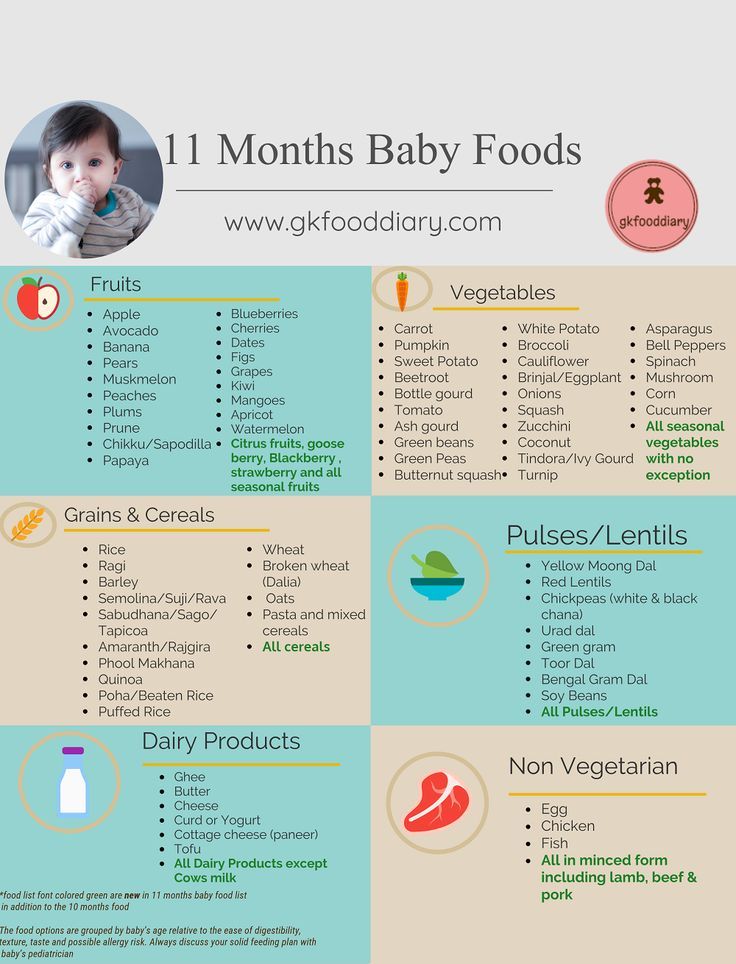 Read more
Read more
Information
- Provider
- Nighp Software LLC
- Size
- 92.8 MB
- Category
- The medicine
- Age
- 4+
- Copyright
- © 2022 Nighp Software
- Price
- Free
- Developer site
- App Support
- Privacy Policy
Other apps from this developer
You may like
How much should a newborn eat: feeding chart
0-6 months
Article
5/5 2 reviews
As soon as the long-awaited event has taken place and the baby is born, the mother is faced with many questions. One of the most frequently asked: how to feed and how much should a newborn eat? Indeed, this is a very important point, since a properly selected and debugged diet allows the child to grow and develop harmoniously, promotes good health and strengthens the immune system. How to calculate the norm for a baby from the first days of life to a year?
One of the most frequently asked: how to feed and how much should a newborn eat? Indeed, this is a very important point, since a properly selected and debugged diet allows the child to grow and develop harmoniously, promotes good health and strengthens the immune system. How to calculate the norm for a baby from the first days of life to a year?
8 min. for reading Feb. 17, 2022
Contents
Listen to the experts
Calculation norms
- First weeks of life
- One to four months
- Five-six months
- Seven to twelve months
How much breast milk a newborn should eat: table
Not enough breast milk or not at all: what to do
Norms and stages of the introduction of complementary foods
- The first stage - vegetables
- Second stage - cereals
- Third stage - fruits
- Fourth stage - meat
- Fifth stage - new flavors
An example of a daily diet for a 6-8 month old baby
Frequently asked questions
Listen to the experts baby's age.
 All these data are usually voiced to parents during a doctor's appointment and entered into the card for further assessment of the child's condition. Comparison of the actual weight and the prescribed norms allows you to find out whether the child is eating well enough and, if necessary, to correct mistakes made during feeding. If something is not clear to you at the appointment with the pediatrician, do not be afraid to ask again and clarify. After all, only a specialist can give competent recommendations specifically for your baby, based on the results of an examination or analysis. The advice of friends, grandmothers and mothers from various forums may be good, but they do not take into account the individual characteristics and needs of your child's body. So, they may not work or even hurt.
All these data are usually voiced to parents during a doctor's appointment and entered into the card for further assessment of the child's condition. Comparison of the actual weight and the prescribed norms allows you to find out whether the child is eating well enough and, if necessary, to correct mistakes made during feeding. If something is not clear to you at the appointment with the pediatrician, do not be afraid to ask again and clarify. After all, only a specialist can give competent recommendations specifically for your baby, based on the results of an examination or analysis. The advice of friends, grandmothers and mothers from various forums may be good, but they do not take into account the individual characteristics and needs of your child's body. So, they may not work or even hurt. Be part of Nestle Baby&Me®
Each stage of a baby's development is unique and is associated with new questions from parents. Get advice from experts.
Registration
Calculated norms
1.
 The first month of life
The first month of life As soon as the baby is born, it is immediately brought to the mother's breast to feed. This helps to strengthen the immunity of the baby and stimulates lactation in the mother. During this period, there is still no milk in the breast, but there is a very nutritious transparent sweetish liquid - colostrum. It is released in the first two or three days after birth and supplies the child with all the necessary substances. To eat, the baby needs a few drops: on the first day of life, the small stomach holds only 7 milliliters. On the second day of life, the baby begins to eat more often. It needs to be fed on demand or every two to three hours, while the baby eats within 10-20 milliliters at one time. Thus, per day the norm will be approximately 90 milliliters. Starting from the third day after birth, the mother actively produces breast milk, the volume of which increases as the child grows. In the first week of life, the baby should eat from 50 to 80 milliliters of milk at a time, and 400 milliliters per day. At two weeks of age, the daily ration should be 20% of the weight of the newborn, and closer to a month - about 600 milliliters. It is important to note that these figures are approximate. Each baby needs its own, certain amount of milk or mixture, depending on individual characteristics: height, weight, mother's milk quality, calorie content of the mixture and the rate of development of the baby.
At two weeks of age, the daily ration should be 20% of the weight of the newborn, and closer to a month - about 600 milliliters. It is important to note that these figures are approximate. Each baby needs its own, certain amount of milk or mixture, depending on individual characteristics: height, weight, mother's milk quality, calorie content of the mixture and the rate of development of the baby.
See also: Breastfeeding: the first steps after childbirth
2. From one to four months
Every day the baby grows, gains weight and increases its daily portions of milk. Having reached the month, the baby is already eating 90-100 milliliters six to seven times a day. After one month, the norms become as follows:
- At two months, the child should eat from 120 to 150 milliliters at a time. The daily norm, therefore, is 700-800 milliliters.
- A three-month-old baby should eat between 150 and 180 milliliters. In this case, it is recommended to observe the frequency of feeding no more than six to seven times a day.

- From the fourth month, babies need 180-210 milliliters of milk or infant formula. The average amount per day is not less than 1/6 of the baby's weight.
3.Five-six months
A six-month-old child normally eats 210-240 milliliters at a time, and the total amount of food per day should be 1/7 of body weight, or 800-1000 milliliters. Also, if there are no contraindications, complementary foods are introduced from six months.
4. From seven to twelve months
During this period, a single portion of breast milk for a baby ranges from 210 to 240 milliliters. At the same time, the average amount per day is not less than 1/8 of the child's body weight. Vegetable, fruit and meat purees, dairy-free and milk porridges are introduced into the diet (if the baby is not allergic to cow's milk proteins).
Below is a table detailing the daily dietary intake of a newborn for each age up to a year.
How much breast milk should a newborn eat: table
| Child's age | The amount of milk eaten per feeding, ml | The amount of milk eaten per day, ml |
| 3-4 days | 20–60 | 200-300 |
| 1 week | 50–80 | 400 |
| 2 weeks | 60–90 | 1/5 child weight |
| 1 month | 100–110 | 600 |
| 2 months | 120-150 | 800 |
| 3 months | 150–180 | 1/6 child weight |
| 4 months | 180-210 | 1/6 child weight |
| 5-6 months | 210–240 | 1/7 baby weight (800-1000) |
| 7-12 months | 210–240 | 1/8 weight baby |
Important!
Remember that every child is unique and has individual characteristics and needs. Therefore, slight deviations from the standard indicators are quite possible.
Therefore, slight deviations from the standard indicators are quite possible.
Not enough breast milk or not at all: what to do
When a baby cries after waking up, he is hungry. Modern doctors do not advise mothers to maintain any strict feeding schedule. If the mother gives the baby a breast when he asks, and the baby eats for her own pleasure and at the same time sleeps soundly and well, smiles and is not naughty, then she is full and completely satisfied.
But if the baby cries and sleeps badly, then perhaps he does not have enough milk. In this case, check if the baby is eating his age norm, and try to keep track of this indicator in the future. Found that you don't have enough breast milk? Do not worry, it is better to immediately consult a doctor. The specialist will help you find a way to support milk production and improve lactation.
If you cannot solve the problem and normalize lactation, consult a pediatrician and find the right supplemental formula for your child. With strict observance of all the doctor's recommendations, instructions for preparation and dosages indicated on the package, the mixture makes it possible to compensate for the lack of breast milk and provide the baby with the necessary amount of nutrients.
With strict observance of all the doctor's recommendations, instructions for preparation and dosages indicated on the package, the mixture makes it possible to compensate for the lack of breast milk and provide the baby with the necessary amount of nutrients.
Important!
Even if you don't have enough breast milk to fully meet your baby's needs, try to remain on partial breastfeeding for as long as possible. After all, the ideal food for a child is mother's milk.
Norms and stages of introduction of complementary foods
As a rule, complementary foods are introduced at the age of six months. Before you start exploring new products, you should consult with your pediatrician. In general, different types of food are introduced in stages, starting with very small portions.
1.First step - vegetables
According to the World Health Organization, the best starter is a one-component vegetable puree, such as zucchini, broccoli, cauliflower or potatoes. If everything goes well, you can try pumpkin, carrot, pea and tomato puree a little later.
If everything goes well, you can try pumpkin, carrot, pea and tomato puree a little later.
It takes seven to ten days to fully introduce the product into the baby's diet. We start with half or a whole teaspoon once a day until breastfeeding. If there are no allergic or other adverse reactions, you can continue the introduction of this product, gradually increasing the dose to a full serving - 100-150 grams.
2. The second stage - porridge
After the introduction of vegetable puree, we recommend diversifying the baby's menu with porridge. For acquaintance, it is better to choose liquid one-component gluten-free cereals, for example, rice or buckwheat. Then you can add oatmeal or semolina.
The initial portion of porridge is half or one teaspoon. Gradually increase the portion to a full - 150 grams.
3.Third stage — fruit
We also start fruit complementary foods with one-component low-allergenic purees, such as apple, pear, plum, banana.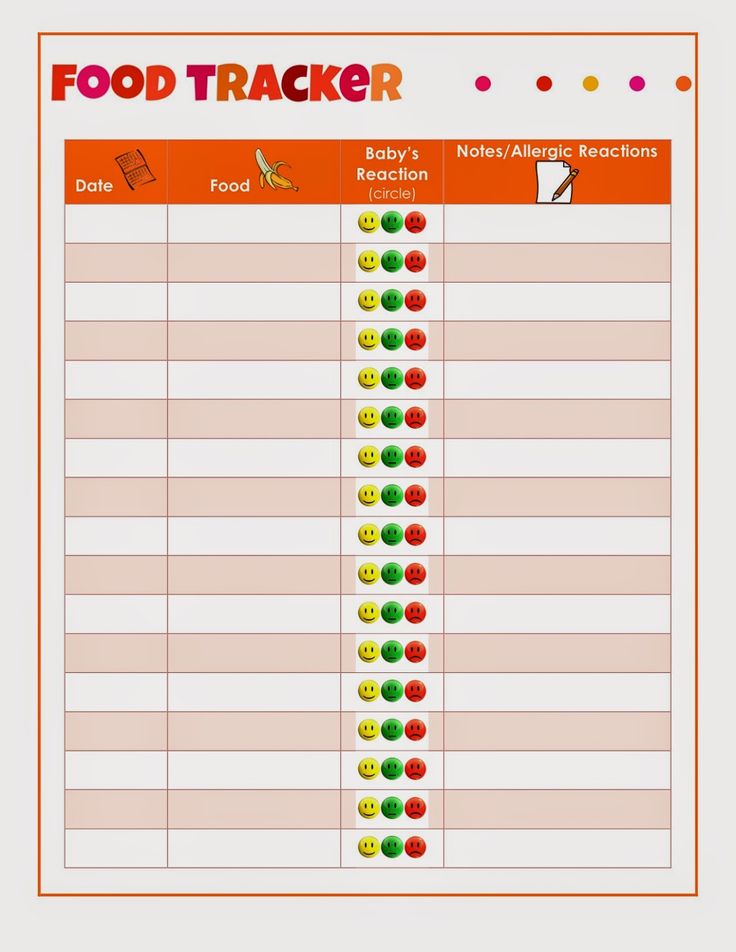 These products are not only tasty, but also contain vitamins and minerals necessary for the child.
These products are not only tasty, but also contain vitamins and minerals necessary for the child.
Fruit purees are also introduced with caution, starting with half or a whole teaspoon. Gradually, the portion increases to 100-150 grams.
Find out more: Gerber Baby Food: Puree Range
4.Stage Four - Meat
Meat is an essential product for development, rich in iron and protein, which is well absorbed in the body. It is introduced in the form of a homogeneous one-component puree from dietary turkey, rabbit, chicken, veal or lamb.
At the beginning we give a try - half or one teaspoon, over time we bring the portion to 60 grams.
5. The fifth stage - new tastes
After the successful introduction of the above products, the baby forms a full-fledged varied menu. So you can introduce the young gourmet to new flavors that could previously provoke an allergy: multi-component purees, fruit and cereal cocktails, children's snacks, pieces of fresh fruits and vegetables.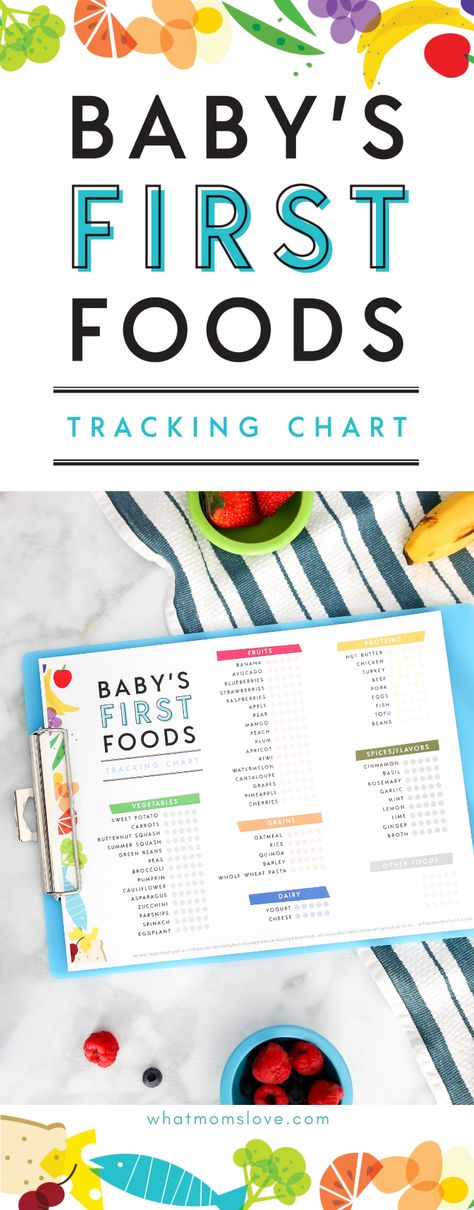
See also: Introduction of complementary foods to children with food allergies
Example of a daily diet for a baby at 6-8 months
A child from six to eight months should be given complementary foods three times a day. Further, at the age of nine to eleven months, the amount is increased to four times a day. To make it easier and clearer, check out two options for a full-fledged daily diet, which outlines what and how much a newborn should eat.
Read also: Nutrition for a 7-month-old baby: making a menu for a baby
Popular questions
1. How to warm up breast milk?
Use the bottle warmer to warm breast milk that has been stored in the refrigerator. If this is not at hand, put a tightly closed bottle in a container of warm water and hold it there until the milk warms to body temperature - 37 ° C.
2. How often should a newborn eat?
A newborn needs to be fed every 2-3 hours, i.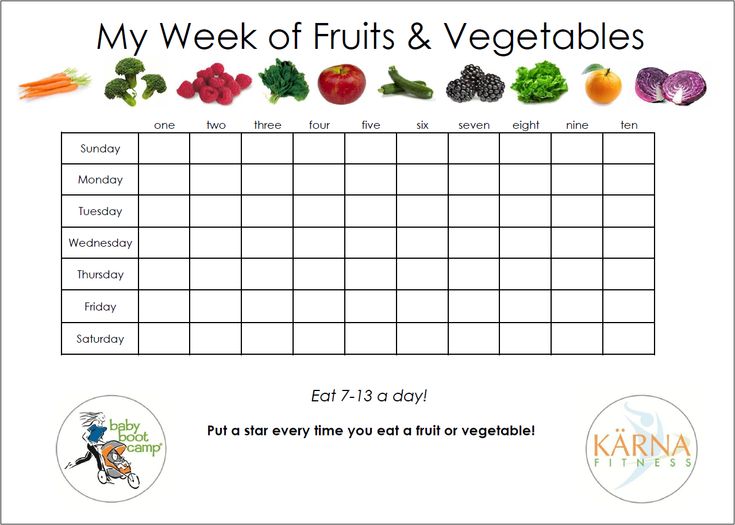 e. 10-12 times a day.
e. 10-12 times a day.
3. How much milk does a newborn eat?
During the first days of life, the baby has a very small stomach and a poorly developed sucking reflex. Therefore, for one feeding, the newborn eats 7-9 milliliters of colostrum. Breast milk from the mother appears only on the third or fourth day.
4. How to calculate how much a child should eat?
To understand how much a newborn should eat, you need to know his age and weight. Data for calculation: from 10 days to 1.5 months, the baby needs such an amount of food, the weight of which is approximately 1/5 of the child's body weight; from 1.5 to 4 months - 1/6, from 4 to 6 months - 1/7; from 6 to 8 months - 1/8; from 8 to 12 months - 1/9 of the body weight.
Articles on the topic:
Breastfeeding: benefits for the baby, health for the mother 12 rules of healthy nutrition for children Baby does not eat well, how to feed?
Latest reviews
Average customer rating
2 customer ratings
Snapshot of community ratings
- 5 2
- four 0
- 3 0
- 2 0
- one 0
Recommended Articles
0-6 months
Article
Quantity and quality of protein in breast milk
The amount of protein in breast milk is perfectly adapted to your baby's age and needs at every stage of their development.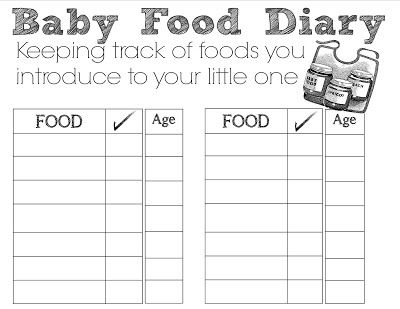
0-6 months
Article
Buying and storing baby food
Organizing a safe and wholesome diet is an important task that is entirely the responsibility of adults. This means that every parent must know the rules for choosing, storing and feeding the smallest.
0-6 months
Article
Diet during lactation
During lactation, the mother's body uses nutrients primarily for milk production and then for itself.
0-6 months
Article
The diet of a child at 7 months: we make a menu for the baby
What should be the menu of a child at 7 months? What foods and in what quantity can be introduced into the diet at this age? When and at what intervals to give the baby to eat? We will help develop an approximate menu for a 7-month-old baby and answer the most exciting questions regarding the nutrition of a baby up to a year old.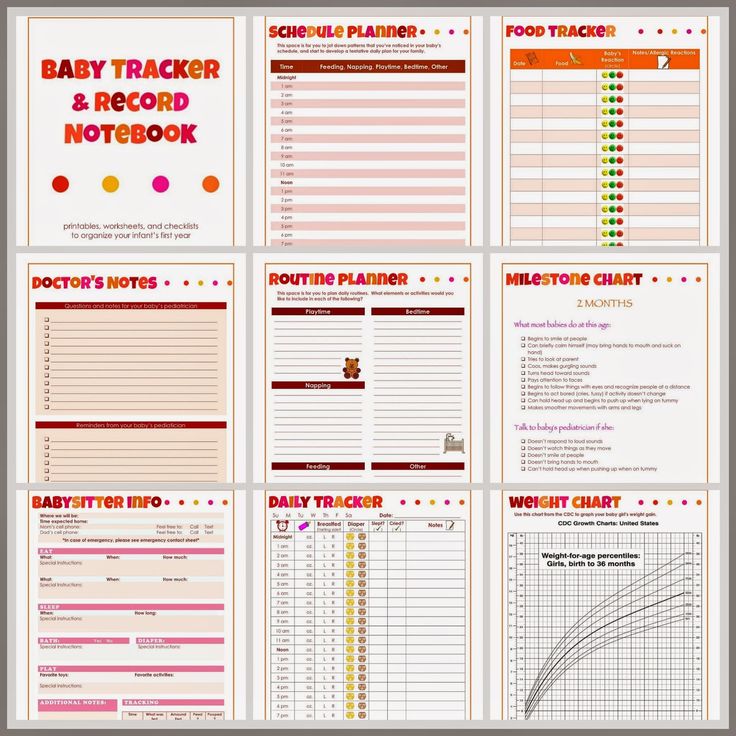
0-6 months
Article
Feeding a nursing mother
Most of the nutrients your baby gets through breast milk come from your body's stores. Therefore, do not forget that the menu of a nursing mother plays an important role!
0-6 months
Article
Proper nutrition is the basis of future health
During the first 1000 days of a baby's life, optimal nutrition largely determines the growth and development of the child in the present and future. A balanced diet, which contains the most important macro and micronutrients, is an important investment in a child's future health.
0-6 months
Article
Major food allergens
An allergic reaction in a child, just like in an adult, occurs when the body mistakenly perceives a substance as harmful, in other words, it is a defensive reaction to an invasion that actually did not occur.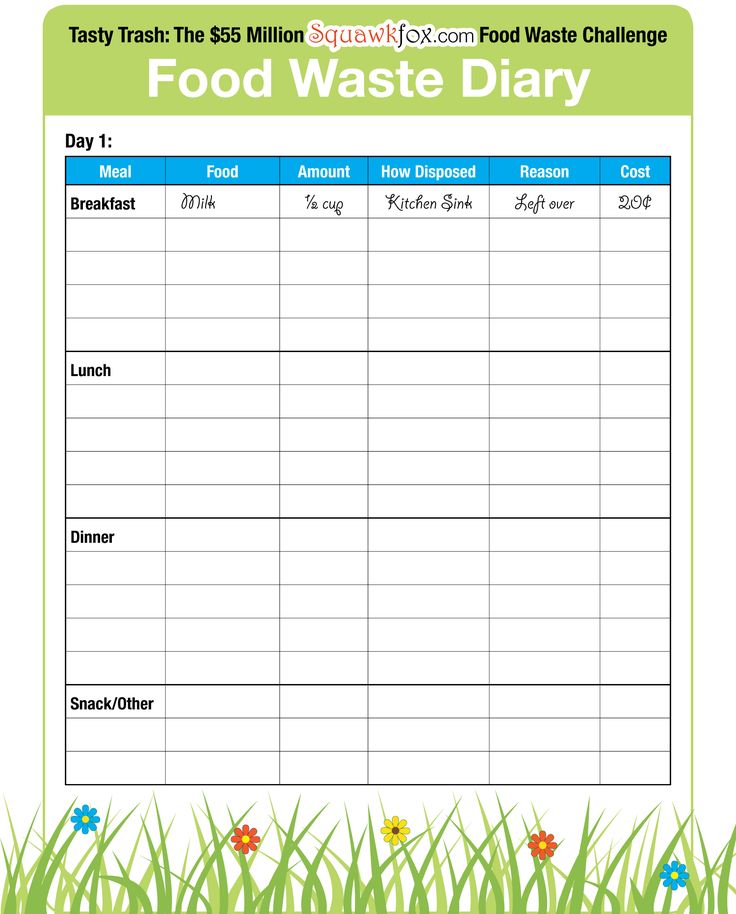
0-6 months
Article
Basic principles of breastfeeding
0 reviews
Are you planning to breastfeed your baby but don't know what it takes? Here is a list of breastfeeding tips to help you get ready.
0-6 months
Article
How can a new mother cope with feelings of loneliness?
0 reviews
Even with the abundance of online parenting forums, new moms often feel lonely. Here is a list of activities for parents and children, from organizing games together to children's yoga, that will help you feel less isolated.
0-6 months
Article
Vomiting in a child: what to do to help the baby
0 reviews
What causes a child to vomit and how to provide first aid before the doctor arrives.
0-6 months
Article
Physical development of the child by months
All parents are worried about whether their baby is developing normally, whether he is gaining enough weight and whether the growth of the baby is normal, whether he is acquiring all the skills appropriate for an early age.
0-6 months
Article
Menu for breastfeeding: what can a nursing mother eat?
0 reviews
If you are breastfeeding, it is important to eat a healthy diet because breastfeeding can affect your baby as much as you. We have collected information about what you can eat for a nursing mother, and what is not recommended to eat while breastfeeding.
0-6 months
Article
Immunization schedule in Ukraine: vaccination rules
During the first year of life, a baby is recommended to have a number of vaccinations against various life-threatening diseases. In order to determine the order and time of vaccination, there is a special vaccination schedule recommended by the Ministry of Health of Ukraine.
In order to determine the order and time of vaccination, there is a special vaccination schedule recommended by the Ministry of Health of Ukraine.
0-6 months
Article
How to remove the stomach after childbirth: TOP 8 tips
0 reviews
A few proven methods of how to clean the stomach after childbirth. Follow simple recommendations, and soon you will return to your figure, which was before pregnancy.
0-6 months
Article
How to care for the navel of a newborn?
0 reviews
The baby's umbilical cord is the link between the baby and mother throughout life inside the mother's womb.
0-6 months
Article
How to be a good parent
0 reviews
Becoming a parent for the first time and bringing a newborn home is the most exciting moment. Along with all the joy and love you experience, it's perfectly normal to feel unprepared and overwhelmed. If you're worried about becoming a mom or dad soon, we've put together some tips on how to be a good parent.
Along with all the joy and love you experience, it's perfectly normal to feel unprepared and overwhelmed. If you're worried about becoming a mom or dad soon, we've put together some tips on how to be a good parent.
0-6 months
Article
How to teach a child to roll over from his stomach to his back?
0 reviews
In the first year of life, the baby grows and develops very quickly. Parents rejoice at each new success of the crumbs. Here he is already holding his head, and now he is turning over from his back to his side. But sometimes the baby does not get coups from the back to the stomach and vice versa. In this case, mom and dad can help him. How to teach a child to roll over from his stomach to his back and vice versa?
0-6 months
Article
First walk with a newborn: useful tips
0 reviews
Preparing for a child's first walk can be difficult.